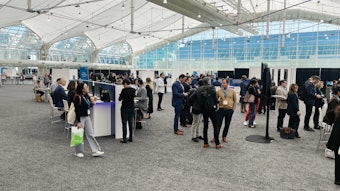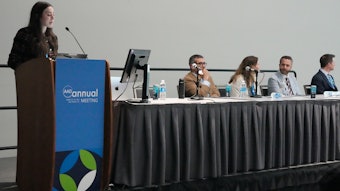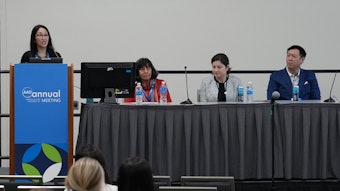Root reactions
Treating plant dermatoses with the right extract.

In the world of plant lovers, a green thumb may not always be a good thing. Some people experience significant cutaneous reactions when exposed to certain plants. And that requires a bit of detective work by the dermatologist.
Solving the mystery and bringing relief to patients was the focus of Friday’s session, U003 – Welcome to the Jungle: Plant Dermatoses and Plant Extracts in Dermatology. Callie Burgin, MD, FAAD, from the Indiana University School of Medicine, served as the session’s director. Dr. Burgin discussed the mechanism of reactions and gave examples of plant species that cause each reaction with a focus on the most often encountered wild plant species and popular garden/ house plants.
“Know common plants in your geographic area and the means of potential exposures,” Dr. Burgin said. Cutaneous reactions are often caused by exposure to plants that can cause allergic contact dermatitis, phytophotodermatitis, mechanical and chemical irritant dermatitis, immunologic contact urticaria, and non-immunologic contact urticaria, she said.
Garden variety
According to Dr. Burgin, allergic contact dermatitis is the most common of all reactions. It is most often caused by toxicodendron genus (poison ivy, oak, sumac), but can be caused by several other common floral species and foods, including onion, garlic, and chive.
The most common immunologic-based rashes represent allergic contact dermatitis and urticaria. Non-immunologic-based rashes often result from physical injuries caused by thorns, leaves, or chemicals in the plant’s sap or coating of the leaves, she said.
“Dermatitis occurs at the site of exposure, so taking a history of potential exposures can help identify a cause,” Dr. Burgin said. “Even workplace exposures can contribute to [cutaneous reactions], such as food preparation workers, florists, etc.”
Leave it at work
For example, 95% of the time, immunologic contact urticaria is caused by workplace exposure. Immunologic contact urticaria, a hypersensitivity to IgE antibodies such as histamine, prostaglandins, kinins, and leukotrienes, may often be tied to long-term food handling, gardening, and landscaping, Dr. Burgin said. It’s also associated with patients who have a history of an underlying dermatitis (atopic, irritant contact). Specific foods related to the condition include fresh fruits and vegetables, such as tomatoes, bananas, lemons, celery, onions, potatoes, and lettuce.
Similarly, exposure to certain other plants can cause mechanical irritant dermatitis, Dr. Burgin said. Thorns and spines from cacti, thistles, prickly lettuce, berries, and grasses, for example, can penetrate the skin and become an abrasive injury. This can lead to a secondary infection, she said, such as Clostridium tetani, S. aureus, Sporothrix schenckii, Mycobacterium kansasii (blackberries), M. marinum (cactus spines), and M. ulcerans (thorned tropical vegetation).
Turning over a new leaf
Ironically, plants — or plant extracts — can provide therapeutic applications to treat cutaneous reactions. Dr. Burgin reviewed emerging use of plant extracts in dermatology including arnica, bromelain, and polypodium leucotomos extract.
Bromelain is an enzyme extract derived from the stem and fruit of the pineapple plant, Dr. Burgin said. One must use caution with bromelain as it can cause irritant contact dermatitis and stomatitis, but with appropriate use it may provide anti-inflammatory and analgesic benefits as well as relief from sinus congestion and sore muscles. Because it is beneficial in wound care, 35% bromelain included in a lipid base is used for debridement of necrotic, chemical wounds.
“Among the extracts, consider arnica and bromelain for bruising, swelling, and post-procedure wound healing; ginkgo biloba for vitiligo; and polypodium leucotomos fern extract for sun protection,” Dr. Burgin said.












